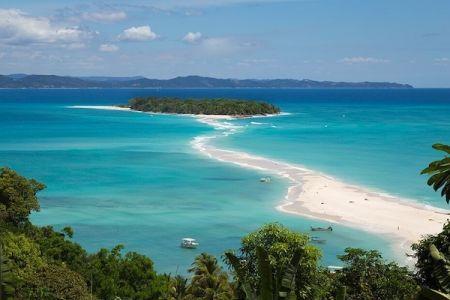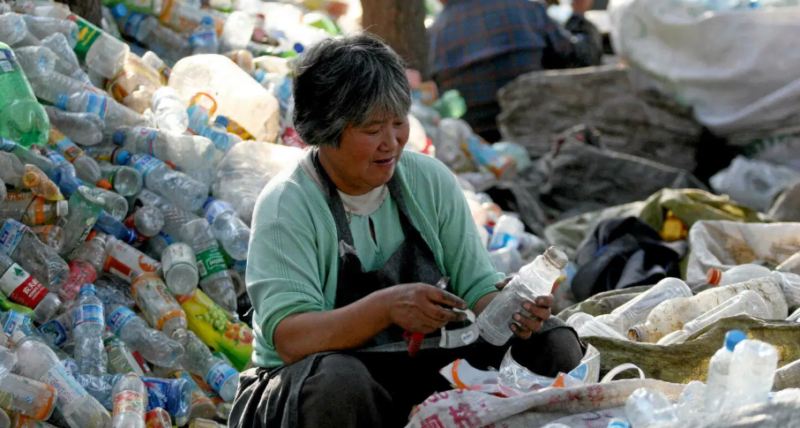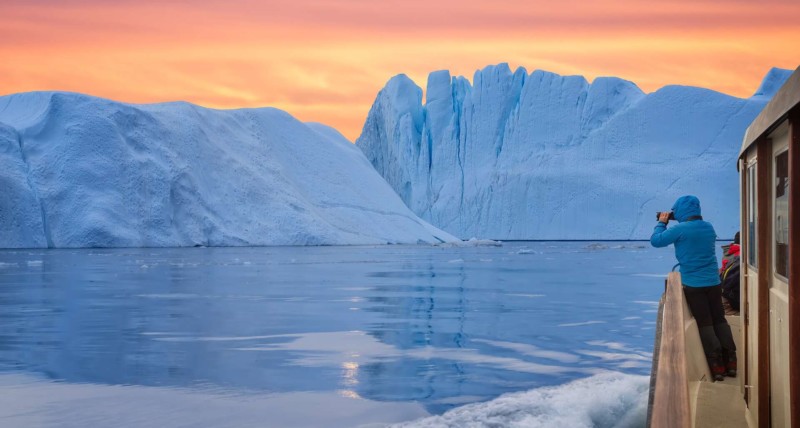(Ecofin Agency) – From April 17 to 19, 2025, Madagascar will host the second edition of the African Youth Forum on the Blue Economy. With registrations officially open for a few days, the organization of this event symbolizes the country’s growing commitment to the development of this strategic sector.
For several years, the government has been implementing an ambitious policy aimed at sustainably structuring and exploiting maritime resources. This choice is part of a global dynamic, where the blue economy represents an estimated economic potential of more than $3 trillion per year, according to the World Bank.
A considerable maritime potential, yet underexploited
With 5,500 kilometers of coastline, Madagascar has an exceptional shoreline, lined with coral reefs and mangroves, covering more than 2,000 km² and 2% of the world’s coverage, respectively. These ecosystems play a key role in preserving marine biodiversity and fostering local economic development, particularly through fishing, aquaculture, and coastal tourism.

Madagascar’s Exclusive Economic Zone (EEZ), which spans 1.14 million km² – more than double its land area – gives the country exclusive rights to exploit underutilized fishery, energy, and mineral resources.

Marine and coastal tourism also constitutes a major economic lever. Iconic sites such as Nosy Be, Sainte-Marie, and the Bay of Antongil attract thousands of visitors each year, drawn by the diversity of landscapes and the richness of marine wildlife.

Scuba diving, ecotourism, and whale watching, especially humpback whales, are among the activities that help boost the sector. However, the lack of infrastructure and the absence of a clearly defined blue tourism strategy still limit its full development.
A gradual structuring of the blue economy
In response to these challenges, the need for better structuring of Madagascar’s blue economy became apparent as early as the 2010s. In 2021, this direction led to the creation of the Ministry of Fisheries and the Blue Economy, marking the official integration of this theme into the government apparatus. The development of the National Blue Economy Strategy (SNEB) between 2022 and 2023 was a key step in this process. This framework document aims to maximize the opportunities offered by the maritime economy, while ensuring sustainable and equitable management of natural resources.
The SNEB is based on five strategic axes. It aims to improve blue governance through more adapted regulations and better coordination between various stakeholders. The document also emphasizes the valorization of natural resources, particularly through sustainable fishing and enhanced aquaculture development. The development of maritime infrastructure and services is also a priority, as is the rational exploitation of water resources. Finally, the strategy aims to strengthen resilience to climate change, as the country is highly vulnerable to cyclones and coastal erosion.
Fishing and aquaculture: engines of the blue economy
The fishing sector plays a central role in Madagascar’s economic strategy. While annual fishery production reaches about 100,000 tons, estimates suggest that the actual potential of Madagascar’s EEZ is around 220,000 tons. This gap is partly due to illegal, unreported, and unregulated (IUU) fishing, but also due to gaps in infrastructure and resource management.

In this regard, the SNEB provides for a reevaluation of the fishery potential to optimize resource exploitation. Special attention is given to aquaculture, whose development remains limited despite its considerable potential. According to a 2022 report citing government and FAO data, Madagascar’s total aquaculture production reached 29,477 tons in 2020, with 23,130 tons from marine aquaculture, mostly dominated by seaweed cultivation and shrimp farming.
« A special focus is placed on aquaculture, whose development remains limited despite its considerable potential. »
Continental aquaculture, while more modest, has seen significant growth, reaching 6,347 tons, a 123% increase over ten years. However, there is still a significant margin for growth, with an estimated potential for at least 100,000 tons of freshwater aquaculture products (carp, tilapia, spirulina, etc.).
To fully exploit aquaculture potential, the government intends to encourage private investment and create an incentive framework to accelerate the development of aquaculture initiatives.
One of the key areas of this strategy is the valorization of fishery products. A significant portion of small-scale fishing catches are currently lost due to inadequate conservation solutions. In fishing villages where access to electricity and ice is nonexistent, the introduction of improved smoking and salting techniques is a priority. Modernizing port and logistical infrastructures is also crucial to promote exports and enhance sector competitiveness.
Tourism: a strategic lever undergoing transformation in Madagascar
Tourism is considered an essential driver of sustainable economic development in Madagascar, with the aim of increasing its contribution to GDP beyond 15 to 20%. The goal is to reach one million non-resident visitors by 2028, more than double the number recorded in 2019. Water-related tourism, encompassing marine, coastal, and inland aspects, is a major strategic focus of the SNEB.
The rise of blue tourism relies on several initiatives. The Malagasy state plans to develop new attraction hubs focused on ecological diving, floating eco-lodges, and kayaking expeditions to observe whales.
« The Malagasy state plans to develop new attraction hubs focused on ecological diving, floating eco-lodges, and kayaking expeditions to observe whales. »
These infrastructures will be supported by a network of marine protected areas that promote both conservation and tourism activities. Valorizing iconic destinations such as Nosy Be, Sainte-Marie, the Bay of Antongil, and the Pangalanes Canal will also help structure a coherent offering, adapted to international standards.

So far, domestic tourism has been largely neglected in Madagascar’s tourism development policies. The Covid-19 crisis revealed a genuine domestic market, with over one million visitors annually in the Analamanga region, according to the Regional Tourism Office of Analamanga (ORTANA).
The SNEB aims to capitalize on this momentum by fully integrating domestic tourism into the blue economy development strategy. This includes the development of high-potential sites such as the Pangalanes Canal, which could become a major axis for river tourism spanning nearly 700 kilometers between Tamatave and Farafangana in the eastern part of the country.
The goal is to structure and diversify the offer by developing suitable accommodations, promoting private investments, and strengthening training for sector players. The government also plans to facilitate access to tourist destinations through improvements in road infrastructure and the extension of regional air connections.
To ensure the attractiveness and competitiveness of Madagascar as a destination, significant investments in infrastructure are necessary. Modernizing ports, improving air and land connectivity, and developing maritime transport infrastructure are among the measures planned in the SNEB. Expanding regional airports to accommodate international flights and providing specific facilities for nautical activities (marinas, docks) are also key priorities.
A future to build between ambitions and challenges
The implementation of the SNEB represents a major step forward for Madagascar, but its success will depend on several factors. Improving governance, strengthening technical capacities, and mobilizing financing will be essential to realize the stated ambitions. The attractiveness of investments, particularly through public-private partnerships and better access to international financing, will play a key role in the success of this transition.
The organization of the African Youth Forum on the Blue Economy in April 2025 fits into this dynamic and demonstrates Madagascar’s desire to position itself as a major player in the blue economy in Africa. This event will be a platform to discuss solutions to make the maritime economy a real engine of growth. Madagascar will also host the Indian Ocean Commission summit on Nosy Be Island in April 2025. The subject of the blue economy will be at the heart of discussions involving French President Emmanuel Macron, who is expected to visit the island.
« Madagascar will also host the Indian Ocean Commission summit on Nosy Be Island in April 2025. The subject of the blue economy will be at the heart of discussions involving French President Emmanuel Macron, who is expected to visit the island. »
Beyond political ambitions and strategic frameworks, it should be noted that the effective transformation of Madagascar’s blue economy will require rigorous execution and efficient monitoring mechanisms. If Madagascar manages to overcome structural challenges and balance economic exploitation with environmental preservation, the blue economy could become one of the pillars of the country’s sustainable development.
Source: agenceecofin




